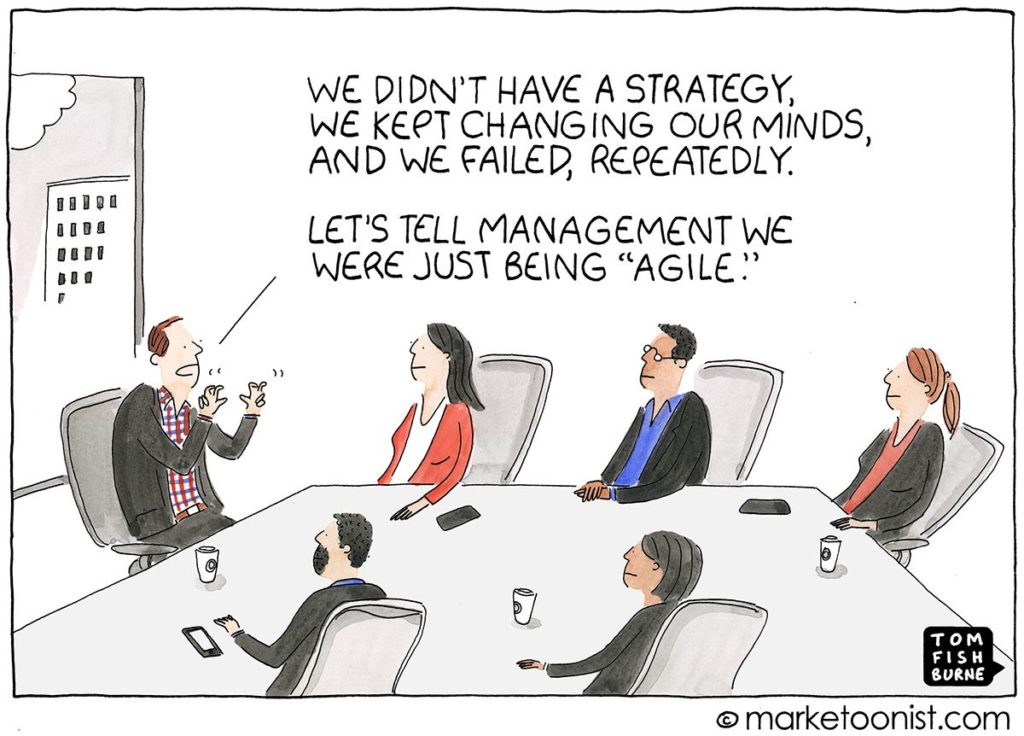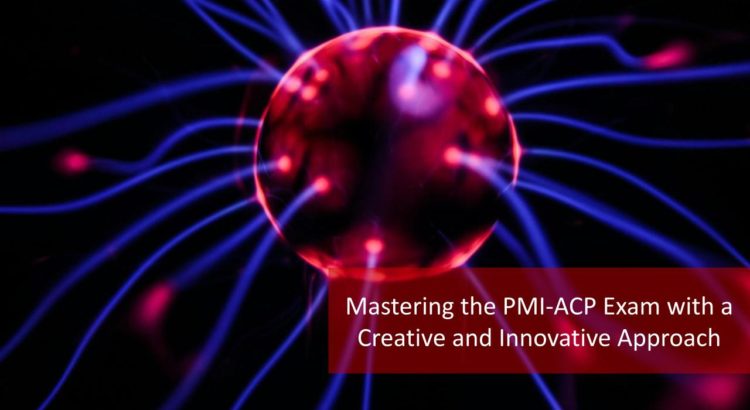In today’s fast-paced business landscape, success is no longer about just following established practices—it’s about creativity and innovation. As a project manager pursuing the PMI-ACP® (Agile Certified Practitioner) certification, it’s essential to internalize these values. Creativity and innovation drive Agile practices, which focus on delivering value incrementally while being responsive to change.

More importantly, over the long term, creativity and innovation always win out over simply copying competitors. Industries and organizations that consistently push the boundaries with new ideas and innovative approaches are the ones that lead their markets. By adopting this mindset, you’re not just preparing to pass the PMI-ACP exam—you’re positioning yourself as a transformative leader.
In this blog post, we’ll explore practical examples of creativity and innovation in Agile, and provide practice PMI-ACP exam questions to help you prepare for the certification with an innovative mindset.
Why Creativity and Innovation Are Critical in Agile Project Management
As a project manager, there are times when tried-and-tested methods just aren’t enough. In Agile, it’s not about rigidly following frameworks—it’s about applying them creatively to solve unique challenges.
Consider these examples from diverse industries:
- Example 1: Google’s “20% Time” Initiative
Google allows employees to spend 20% of their work time on projects that aren’t part of their normal duties. This approach fosters creativity, leading to innovative products like Gmail and Google Maps. In Agile, teams are often encouraged to experiment with new ideas through spikes or hackathons, ultimately driving breakthroughs. - Example 2: Toyota’s Kaizen (Continuous Improvement) Philosophy
Toyota’s Kaizen approach emphasizes constant, incremental improvements driven by team members’ ideas. This practice aligns with Agile’s focus on continuous improvement. The key to Toyota’s success has been its commitment to empowering teams to think innovatively about how to make small, daily improvements that accumulate over time. - Example 3: Tesla’s Agile Approach to Product Innovation
While other automotive manufacturers have been slow to adapt to change, Tesla’s iterative approach to software updates and product development is a prime example of innovation in action. Rather than waiting for annual vehicle releases, Tesla pushes over-the-air updates to improve vehicle performance and customer experience regularly, embodying Agile principles.
By encouraging creative problem-solving and innovative solutions, Agile methodologies give teams the flexibility to respond to evolving customer needs and market demands. And this mindset can help you not only pass your PMI-ACP exam but also set you apart as a project manager who leads through innovation.
Incorporating Creativity and Innovation into Your PMI-ACP Exam Preparation
The PMI-ACP exam requires not only a firm grasp of Agile principles but also the ability to think creatively in dynamic project environments. To help you succeed, here are some tips for emphasizing creativity and innovation while you study, as well as sample PMI-ACP exam questions to test your understanding.
Agile Principles and Mindset with a Creative Spin
Agile thrives on flexibility and creative solutions to complex problems. This domain tests how well you can foster an Agile mindset that embraces experimentation.
Example Question:
Your Agile team has run into a roadblock because the current approach to solving a key problem isn’t working. What is the most innovative next step?
A) Abandon the current approach and wait for new instructions
B) Seek external advice from another Agile team or domain expert
C) Encourage the team to brainstorm creative alternative solutions
D) Follow a previously successful method used in similar projects
Correct Answer: C
Explanation: Creativity in Agile means exploring new ways to solve problems, rather than relying solely on past methods. Teams are encouraged to innovate and test alternative solutions that might yield better results.
Value-Driven Delivery with an Innovative Edge
Delivering maximum value isn’t about copying competitors; it’s about crafting unique solutions that set you apart. How can you deliver value in a way that competitors haven’t yet imagined?
Example Question:
Your customer requests a feature that would replicate a competitor’s functionality. How should your Agile team handle this request to emphasize creativity and innovation?
A) Develop the feature exactly as requested to match the competitor’s product
B) Analyze the request, and propose a unique feature that offers greater value
C) Reject the request as it wasn’t part of the initial scope
D) Prioritize the feature based on customer feedback without further analysis
Correct Answer: B
Explanation: Agile encourages teams to deliver unique value, not just copy what competitors are doing. By offering a creative solution that goes beyond the competitor’s product, the team can differentiate itself in the marketplace.
Team Performance: Creative Collaboration
Agile teams thrive when they are given the space to innovate and collaborate. A great Agile team encourages the creative exchange of ideas and solutions.
Example Question:
Your team is having difficulty solving a complex issue during a sprint. What’s the best way to foster creativity and collaboration?
A) Assign the task to a senior team member to solve independently
B) Encourage the team to take a break and return with fresh ideas
C) Hold a team brainstorming session to gather innovative ideas
D) Escalate the issue to management for additional resources
Correct Answer: C
Explanation: Agile is all about teamwork and collaborative problem-solving. By holding a brainstorming session, the team can explore diverse ideas and come up with creative solutions.
Additional PMI-ACP Exam Questions for Creative Thinking
Here are a few more practice questions to test your innovative thinking as you prepare for the exam:
Question 1:
You’ve been tasked with launching a new product that requires a rapid pivot from the initial concept due to customer feedback. What should your Agile team do to maintain an innovative approach?
A) Stick to the original plan to avoid confusion
B) Experiment with multiple prototypes and gather feedback
C) Copy a competitor’s product and iterate from there
D) Freeze the scope to avoid further changes
Correct Answer: B
Explanation: Agile encourages continuous feedback and experimentation. Prototyping and gathering feedback help ensure that the team is delivering a product that meets customer needs while remaining open to innovation.
Question 2:
An Agile team is brainstorming ways to reduce cycle time in their development process. What’s the most creative approach they can take?
A) Review the current process and eliminate unnecessary steps
B) Outsource the work to speed up development
C) Replicate a competitor’s faster development process
D) Rely on management to provide new process improvements
Correct Answer: A
Explanation: Reducing cycle time through the elimination of unnecessary steps is a core Agile practice. It encourages continuous improvement by identifying and removing inefficiencies within the team’s own processes rather than copying external solutions.
Question 3:
The team is behind schedule due to a dependency on a third-party vendor. How can they creatively continue adding value to the project?
A) Wait for the vendor’s delivery before proceeding
B) Re-prioritize the backlog and work on deliverables that don’t rely on the vendor
C) Outsource the vendor’s task to a different company
D) Pause the sprint until the dependency is resolved
Correct Answer: B
Explanation: Agile encourages flexibility in the face of external dependencies. Re-prioritizing the backlog to focus on work that can continue without the vendor allows the team to maintain momentum and deliver value incrementally, despite the delay.
10 Steps to Refine Your Creativity and Innovation
Refining creativity and innovation in project management is essential for staying competitive and delivering unique solutions. Here are some tangible ways to foster and enhance creativity and innovation in your projects:
1. Encourage a Culture of Experimentation
- Try new methods: Allow your team to experiment with new techniques, frameworks, or tools. Even if the experiment doesn’t yield immediate success, it could uncover a better approach or inspire further creative ideas.
- Host innovation sprints: Dedicate time during each project for team members to focus on innovative problem-solving, similar to Google’s “20% time” or hackathons.
- Allow space for failure: Create an environment where team members feel safe taking calculated risks without fear of punishment. Failures often provide valuable learning experiences that lead to future successes.
2. Cross-Pollinate Ideas from Different Industries
- Look outside your industry: Explore how other industries approach problems or use creative solutions. For example, design thinking in the tech industry could inspire a new approach in healthcare project management.
- Join multidisciplinary teams: Engage with people from different backgrounds or industries to bring fresh perspectives to your project. Cross-functional collaboration often sparks innovative ideas.
3. Utilize Brainstorming Techniques
- Mind mapping: Create visual representations of ideas using a mind map. This can help you explore connections between concepts and generate innovative solutions.
- Reverse brainstorming: Instead of asking, “How can we solve this problem?” ask, “How can we create this problem?” This technique helps teams identify weak points in their current approach and develop creative ways to fix them.
- SCAMPER method: This technique encourages creative thinking by examining existing processes or products and asking how they can be Substituted, Combined, Adapted, Modified, Put to another use, Eliminated, or Reversed.
4. Leverage Agile Methodologies for Flexibility
- Iterative cycles: Implement Agile methodologies, which focus on short, iterative cycles. This allows teams to make adjustments based on feedback and explore new ideas without committing to long-term plans.
- Daily stand-ups for creative input: Use Agile stand-up meetings to encourage quick, creative problem-solving. Allow team members to suggest unconventional solutions during these short, focused sessions.
- Retrospectives for continuous improvement: Hold sprint retrospectives that emphasize continuous improvement. Ask the team how processes can be improved creatively moving forward.
5. Adopt Design Thinking
- Empathy-driven innovation: Design thinking encourages project managers to focus on understanding the customer’s needs deeply. By focusing on empathy and real-world application, you can create more innovative, user-centered solutions.
- Prototype and test: Design thinking promotes rapid prototyping and testing, allowing teams to innovate by quickly testing and refining new ideas without committing too many resources upfront. Check out Master of Project Academy’s Approach to Design Thinking in the System Project Management Curriculum in Sandbox Membership.
6. Break Routine to Stimulate Creativity
- Change your workspace: Rearranging your physical environment or working from a new location can stimulate new ideas and break creative blocks.
- Engage in creative exercises: Activities like improvisational games, puzzles, or creative workshops can encourage out-of-the-box thinking and help sharpen your creative skills.
7. Leverage Technology for Innovation
- Use AI and automation tools: Incorporate cutting-edge technology like artificial intelligence, machine learning, or automation to streamline processes and uncover new ways to solve complex problems. Check out Master of Project Academy’s AI course.
- Collaborative platforms: Tools like Miro, Trello, or Asana facilitate collaboration and innovation by providing visual ways to organize ideas and track creative project developments.
8. Seek Feedback and New Perspectives
- Customer-centric innovation: Regularly seek feedback from customers, clients, or end-users. Often, they will provide insights into unmet needs, inspiring creative solutions you hadn’t considered.
- Hold “blue sky” meetings: Schedule sessions where the team is encouraged to think freely about potential solutions without limitations. These open-ended discussions can lead to innovative breakthroughs.
9. Adopt Lean Thinking
- Continuous improvement with Kaizen: Lean management emphasizes eliminating waste and maximizing value. Incorporating Kaizen principles fosters a culture of continuous innovation, with team members constantly looking for ways to improve processes.
- Value stream mapping: Use this tool to visualize workflows, identify bottlenecks, and find creative solutions to streamline and improve project delivery.
10. Focus on Personal Development
- Read widely and diversely: Consuming a variety of books, podcasts, or articles across different fields can inspire new ideas. Innovation often comes from synthesizing concepts from unrelated fields. Here are the books Master of Project Academy recommends:
- Practice mindfulness: Mindfulness techniques, like meditation or reflective journaling, can help clear mental clutter, allowing creative ideas to surface more easily.
- Collaborate with mentors or coaches: Seek out mentors or coaches who excel in creative problem-solving. Their insights and experience can help you refine your approach to innovation in projects.
- Check out The “Not Top Ten” Trends in Project Management
Conclusion: Creativity and Innovation Fuel Your Agile Journey
The PMI-ACP exam is more than just a test of your Agile knowledge—it’s an opportunity to showcase your ability to think creatively and adaptively in a fast-moving environment. By practicing innovative approaches in your project management career, you’ll be able to unlock greater value, outpace competitors, and build teams that thrive on new ideas.
Remember, the most successful Agile practitioners aren’t the ones who simply copy what others have done. They are the ones who push boundaries, challenge the status quo, and innovate for the long term.
At Master of Project Academy, our PMI-ACP Training Course is designed to help you embrace this innovative mindset and excel in the exam. With practice questions, real-world insights, and expert guidance, we’ll help you pass on your first attempt—and become the creative Agile leader that every team needs.

